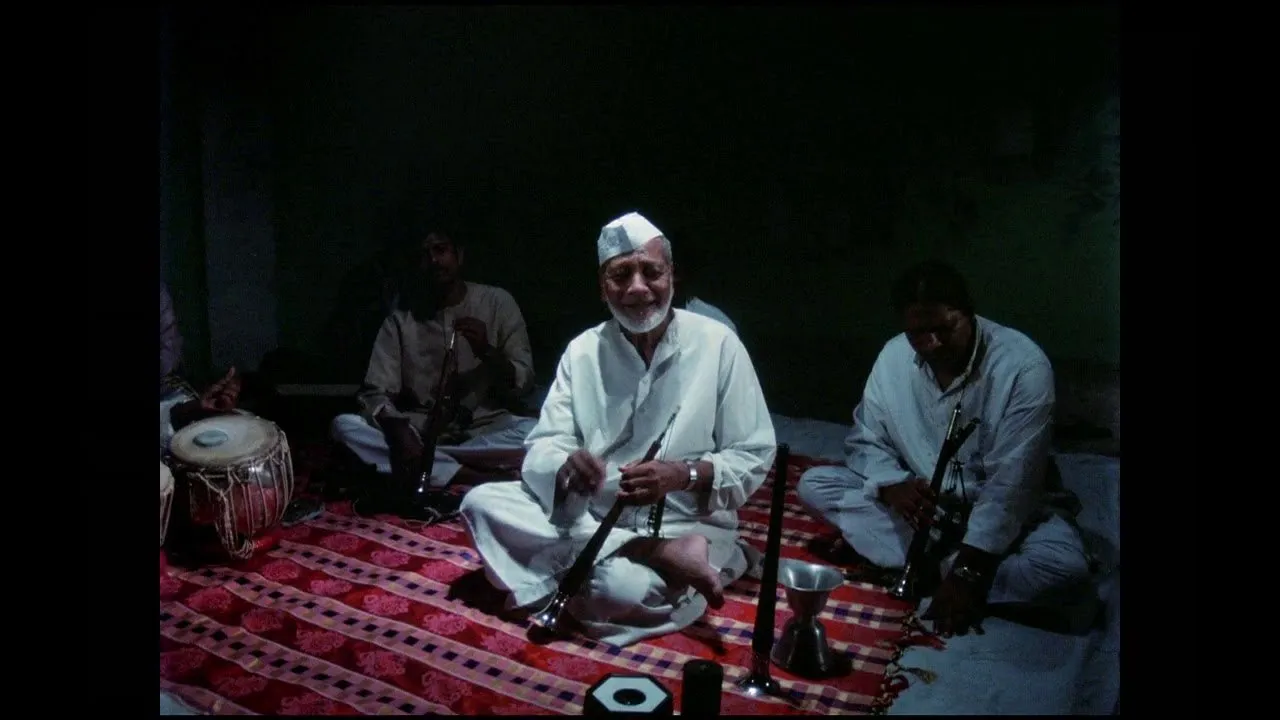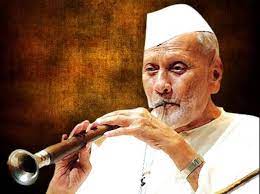
Sange Meel Se Mulaqat: Goutam Ghose’s enchanting tryst with shehnai legend Ustad Bismillah Khan

Goutam Ghose, the winner of multiple National Film Awards, is no stranger to international recognition either. His films and documentaries have travelled across the world, garnering accolades at prestigious film festivals. Despite the global acclaim, Ghose has remained loyal to his roots and stuck to filming content that is deep-rooted in the milieu of his native land.
This attachment to one’s birthplace finds resonance in the life of Ghose’s subject in the documentary, Sange Meel Se Mulaqat (Meeting a Milestone, 1989). The ‘Milestone’ here refers to the incomparable shehnai maestro, Ustad Bismillah Khan (1916-2006).
Late in the 1980s, Ghose, along with acclaimed writer Ain Rashid Khan, paid a visit to the Ustad at his home in Banaras and filmed him at length. In the documentary, the Bharat Ratna awardee shares his views and observations on Hindustani classical music, upbringing in Banaras, reflections on life, and many other interesting anecdotes.
Infusing thumri into shehnai
Sange Meel Se Mulaqat attempts to understand the legendary artist and the magic behind his unparalleled mastery over the shehnai. It is currently streaming in India on MUBI, along with two other acclaimed films of Ghose, Paar (The Crossing, 1984) and Antarjali Yatra (The Voyage Beyond, 1987).
Both the Indian woodwind instrument and its master have become synonymous with each other, forging a life-long communion over several decades. It was the Ustad’s Maamu (maternal uncle) Ali Baksh Khan who brought him to Banaras from Bihar at the age of four after his mother passed away. Maamu, a great shehnai player in his own right, gave the taleem (training) to Bismillah Khan and honed his musical talent.
Also read: Oppenheimer review: Breathtaking visuals, enigmatic Murphy make for a flawed yet thrilling fare
The Khans came from a lineage of great court musicians who passed on their craft to successive generations. But it was Maamu who was quick to realise that to stand out from the crowd of classical musicians, he would have to offer something unique to the listeners. Until then, shehnai-playing was bereft of ragas and was not an instrument used potently in classical music. Maamu infused the vocal traditions of classical singing like thumri, etc. into shehnai playing, thereby offering a unique experience to music aficionados.
The voice called raga
Bismillah Khan learned the different schools of singing from his Maamu and started using the knowledge of ragas to play the shehnai. At the age of 14, in 1930, he accompanied his Maamu to the Allahabad music conference. The legend attributes his success to the pearls of wisdom shared by his Maamu during his childhood days of apprenticeship.

From Maamu, he learned that purity in one’s music can only be achieved if the heart is pure. Taseer (effectiveness) in any form of music is only possible if one doesn’t lie. And the Ustad followed and lived by this motto all his life.
We see him occasionally break into performances and rehearsals with his troupe of background musicians. Ghose does a great job of placing these soul-caressing renditions of ragas at regular intervals in the documentary. The master not only displays his magic with the shehnai but also gives us a glimpse of his singing prowess.
The Ustad emphasises discipline and perseverance as the key requisites for excelling in music. He enlightens Ain Rashid Khan about the real meaning of raga in singing. It is the repeated rendition of particular notes that eventually results in a distinct voice emerging from within. That voice is called raga!
An unrivalled tour de force
Ghose ensures that the interview isn’t contained at the legend’s home. We see the Ustad absorbing the beauty of Banaras Ghats, which he opines is the most mesmerising location in the entire world. Ghose, who also dons the hat of cinematographer, captures beautiful montages of the ghats and the endless expanse of the Ganges, using wide-angle shots.
Throughout the documentary, such mystical images of Banaras and its spiritual soul are interspersed among the Milestone’s talks. Bismillah Khan mentions how his Maamu represented the composite Ganga-Jamuni Tehzeeb (the composite high culture of the central plains of northern India), by performing and rehearsing at the Balaji temple for 18 years. And this syncretic tradition was upheld by him. While growing up, Bismillah Khan would practice daily for 3-4 hours in the temple and had divine or mystical experiences on a couple of occasions.
Also read: Barbie review: Greta Gerwig’s bittersweet ride through nostalgia, feminism, and frivolity
Coming back to his art, he again credits his Maamu for infusing vitality into his shehnai playing. While deciding on the Gharana (school) of singing to follow, his Maamu allegorically advised him to pick beautiful flowers from the Gharanas of Dagar, Agra, and Kinar, to make a uniquely beautiful bouquet of his own. The mastery over serious and traditional ragas and the constant search for truth in his notes are what makes his music an unrivalled tour de force.
The divine connection
One of the most sought after musicians in the world, the Ustad used to decline all invitations for performing during the month of Muharram. A devout Muslim, he would only perform on the 8th day of Muharram and that too on the streets of Banaras as a holy ritual for free. Money never attracted the shehnai wizard. For him, his love for music and Banaras reigned supreme.
He shares an interesting anecdote about one of his tours in America. A filthy rich person from whom even the American government borrowed money was besotted by the Ustad’s music. The American offered him a life of opulence and asked him to settle down in America and teach music.
But Bismillah Khan told him he couldn’t desert his troupe members, as their families were dependent on the income through his performances. The American offered to take care of the 50-60 people involved with him and rehabilitate them in the States. Bismillah Khan responded with just one question: ‘Can you create Banaras in America for me?’ ‘No,’ said the American. The conversation ended there.
Ustad Bismillah Khan explains to the interviewer how easy it is to make money through business. But for a classical musician, money is always scarce, making it difficult to sustain a family. It is the selfless surrender to art and the ecstasy one experiences through it, that is the ultimate reward.
He fondly talks about the earlier times when classical music was so popular in the courts of Kings that even the masses used to be enchanted by it. It had the power to unite people and dissolve the age-old barriers of caste, creed, and religion. As for the Shehnai Samrat (King), through his music, he tried to establish a connection with the Formless One, who he believed was the force behind his artistic magic.


